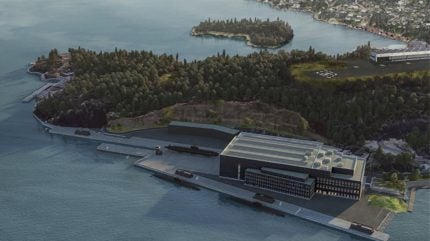
Germany and Norway confirmed that their common maintenance facility, built to support their Type 212CD submarines, will be able to host up to nine boats at any one time.
This new yard will be based in Bergen, Norway, in the South West of the country, according to two speakers, representing their respective navies, in an update at the UDT conference in March 2025.
As part of Haakonsvern, Norway’s largest naval base, this specially designed docking facility will involve the construction of underwater works and extensive concreting works.
The first 212 Common Design (CD) conventional non-nuclear submarine (SSK) is already under construction and will enter service from 2029. The “common maintenance facility”, as they called it, will be up and running by this time.
Ten submarines are currently in the pipeline, but the duo stipulated that the order will go up to 12 boats between the two partners pending parliamentary approval in Norway later this year.
Why so much capacity?
At first glance, the capacity to maintain nine boats – or three-quarters of the joint fleet – seems excessive. During the update, the German partner, Captain Bernd Weis, even said that there will be more additional capacity to come beyond this.
Naval Technology contacted the Norwegian Ministry of Defence (MoD) to discuss its rationale.
“Norway supports the common approach,” said Lars Gjemble, a spokesperson at the MoD, “but it’s important to understand it in the right context and with the intended meaning.”
Gjemble ruled out any prospect that all submarines would be in maintenance at the same.
“The briefing [at UDT] intended to explain that the common maintenance facility is built to support a fleet of up to nine submarines; not to service nine submarines at the same time,” he distinguished, without elaborating on the difference between ‘supporting’ and ‘servicing’ the SSKs.
“Maintenance is scheduled in cycles,” Gjemble added, “and the facility is designed to handle that routine work while also having some buffer for unexpected needs. Repairs and other technical work are handled as needed, where it’s most practical.”
Prospective partners
The rest of the submarine fleet will be maintained elsewhere, for instance by the manufacturer, Thyssenkrupp Marine Systems, or at a satellite facility in Germany. At UDT, the speakers confirmed there will be additional capacity established in Wismar.
“We are also open to other partners joining the programme and contributing to shared lifetime management,” Gjemble stated. “It’s worth noting that maintenance also brings industrial benefits to the partners involved.”
Canada, Greece, and Poland have already expressed interest in acquiring the SSKs. All this infrastructure has been built with more partners in mind.
However, the new facility at Haakonsvern is only designed to ‘support’ and ‘service’ the 212CD class.
“There are neither plans nor capacity to support submarine classes from other nations,” he added, such as the future Swedish Blekinge-class, or the Dutch Orka-class SSKs, models that are giving Type 212CD a run for its money.


